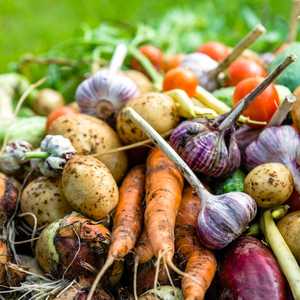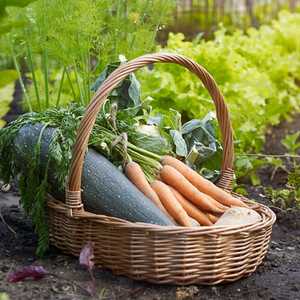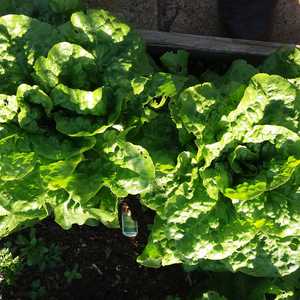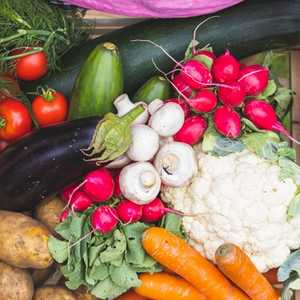Get Out There, Get Digging & Grow Your Own
By Katherine Crouch
At the time of writing (late March), the news is all about COVID 19, and by the time you read this, you will be enduring considerable upheaval and staying at home. Your family are in the house all the time and you are alternately enjoying their company or wanting to throttle them. It’s like Christmas, but with no presents, less tinsel, no in-laws and nicer weather.
The future is looking bleak so it is no surprise that people are looking at their garden and wondering if they should grow some food this year, whilst getting the children involved too (I got my kids, when tiny involved once planting seeds. My daughter dug them up every day to see if they had grown yet!)
A garden project will give you fresh air and exercise and something to amuse the children, (we hope), as well as dinner on the table. I shall give you a quick guide to crops for the best chance of success, and assume that you have a bit of garden, some basic gardening knowledge, and a few tools. Maybe you have grown a few veg in the past but not very strenuously. I shall assume that garden centres have shut, and that you will still be able to get things on the internet if you hurry. Seed companies are experiencing a massive rise in veg seed sales. It is the perfect time of year to start.
It will be an unusual growing year. I shall cadge from a friend some rooted pieces of giant lamb’s ears, Stachys byzantina Big Ears. The leaves are long, soft and very, very strong.
Seed companies are aware that in times of strife, the sales of vegetable seeds increase, and for the moment, they are still dispatching seeds and sundries. The Real Seed Company has a policy of social separation, with fewer staff in the packing station, so expect delivery to be delayed. My advice is based on my taste as well as experience, but your taste may be different – don’t grow stuff you hate to eat.
If I had only a window box or a few pots, I would grow salad leaves, rocket, chives, parsley, and thyme. You can transform dishes of pasta or potatoes for yourself with snippings of your pots all summer. With butter or olive oil, and garlic, I could live off this several times a week. If there are still pots of fresh parsley and chives in the supermarkets, you can gently break them into three of four pieces and plant them in the garden now to crop all summer.
With a space of two square metres, I would grow the above in one half, and plant 9 early potatoes in the other half. The shops will have run out of early seed potatoes by now, but mail order seed companies may still have some. Planted now, they will crop in early June. A mulch of bailiff’s letters will stop them getting green – they must be covered up as they grow!
Potatoes will give you the most weight of enjoyable calories of any crop maturing before midsummer. If the internet runs out of seed potatoes, you might try planting the ones gone all sprout at the bottom of the bag in the cupboard. I wouldn’t normally advise this, and they won’t be early potatoes, so you won’t get a crop till July, by which time things might be back to some kind of normal.
The best varieties to grow from the choice in the supermarket would be second earlies, Charlotte for small waxy potatoes and Wilja for larger spuds. It is not possible to tell if they have been sprayed with anything to retard sprouting, if they have they will not grow. With the 4 metre garden, I would add a square of second early potatoes to the herbs and early spuds. Wedged, boiled or mashed, your children will eat them. Sadly, other easy to grow vegetables like beetroot or radishes are not often liked by children and although I love beetroot I don’t crave them every week, so it is questionable whether they are worth growing. The fourth metre should have a wigwam of runner or Hunter climbing beans, with some carrots if you can squeeze them in.
If your children need the space to play in your tiny garden, dig a 50cm border along the bottom of the sunniest fence. You can grow a row of potatoes, a few salad herbs, and lean bean poles on the fence at the very least.
With more space, I can recommend onions from sets, spinach beet sown now and in July, courgettes sown in pots in April and planted out in May, outdoor cucumbers sown in early May, leeks which can be planted in the place of the early potatoes, and bush French beans. These are mostly trouble free to grow, and you are assured of something to eat. Carrots are probably best grown in large pots of compost – if you can get any. They do not grow well in newly dug ground and will be rather wonky.
If you have 50 to 100 square metres down to vegetables, you will be making serious contributions to the kitchen economy. You could set up a fruit cage, or a cabbage cage, a greenhouse or a small polytunnel, which give you a sporting chance of decent crops of brassicas, without caterpillars, or tomatoes without blight. I have approximately 250 square metres of growing space this year. If I still had small children or dear old mum to look after, I should not be able to keep up with the maintenance. From April to July, I usually spend 10 hours a week in self isolation in the garden, so no change there.
I grow all the vegetables above, plus squash, sweetcorn, tomatoes, celeriac, parsnips and increasingly, perennials crops such as soft fruit, seakale, asparagus, both kinds of artichokes, rhubarb, strawberries, and a grape vine. I shall not tell you where, or where the Claymore mines are buried under the watchful eye of motion sensor CCTV. I also grow dahlias and other flowers for cutting. It is very nice to bring flowers home for the house as well as food, and even nicer to take some when visiting a friend – if only I will be able to resume visiting by August.
It is my sincerest wish that you keep well, and that we may be able to visit friends before summer is out, whether with home grown flowers or not. In the meantime, I shall be in the garden.





With many thanks to Katherine Crouch
Katherine Crouch Garden Design
Telephone
Mobile
Posted on April 6th 2020

